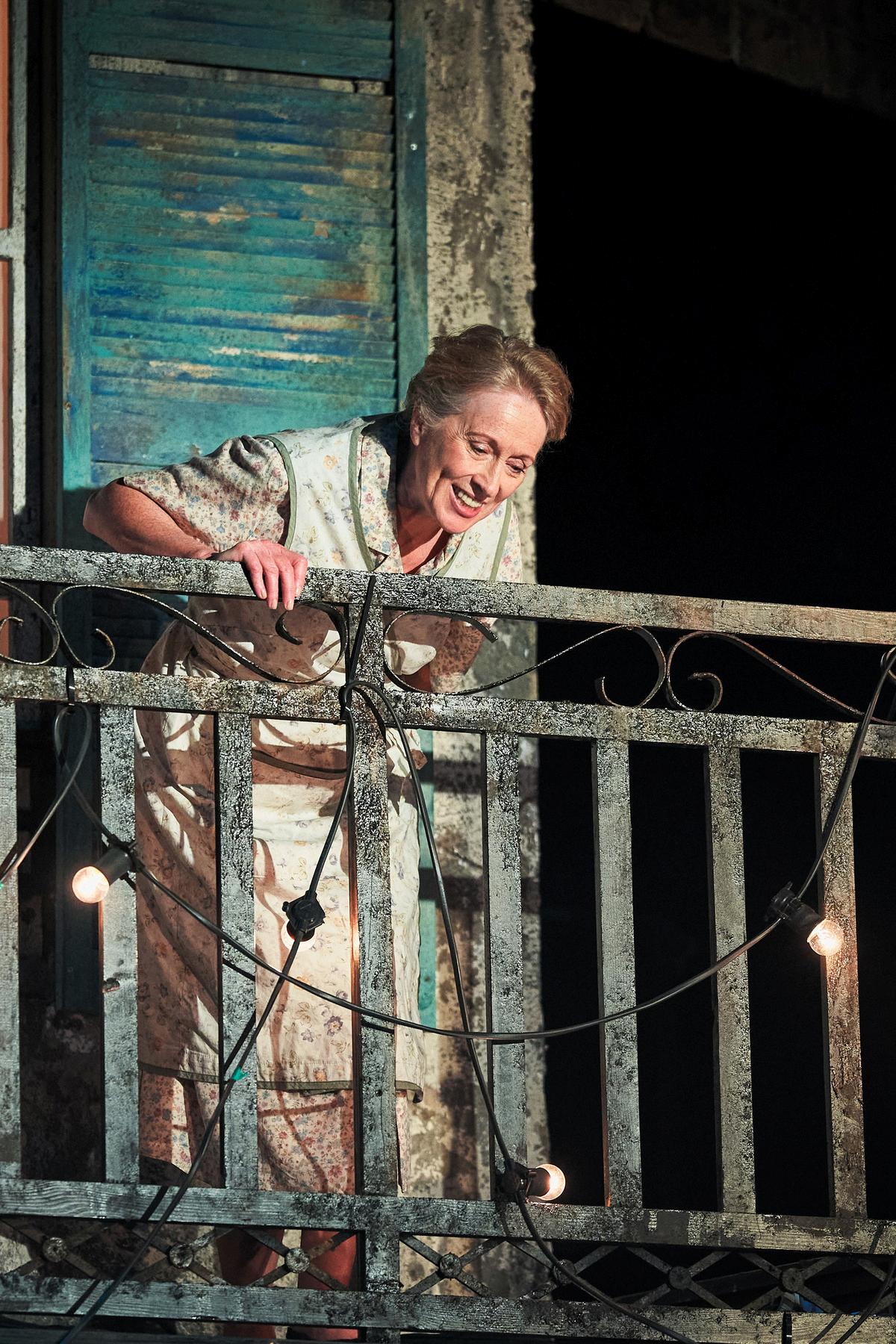
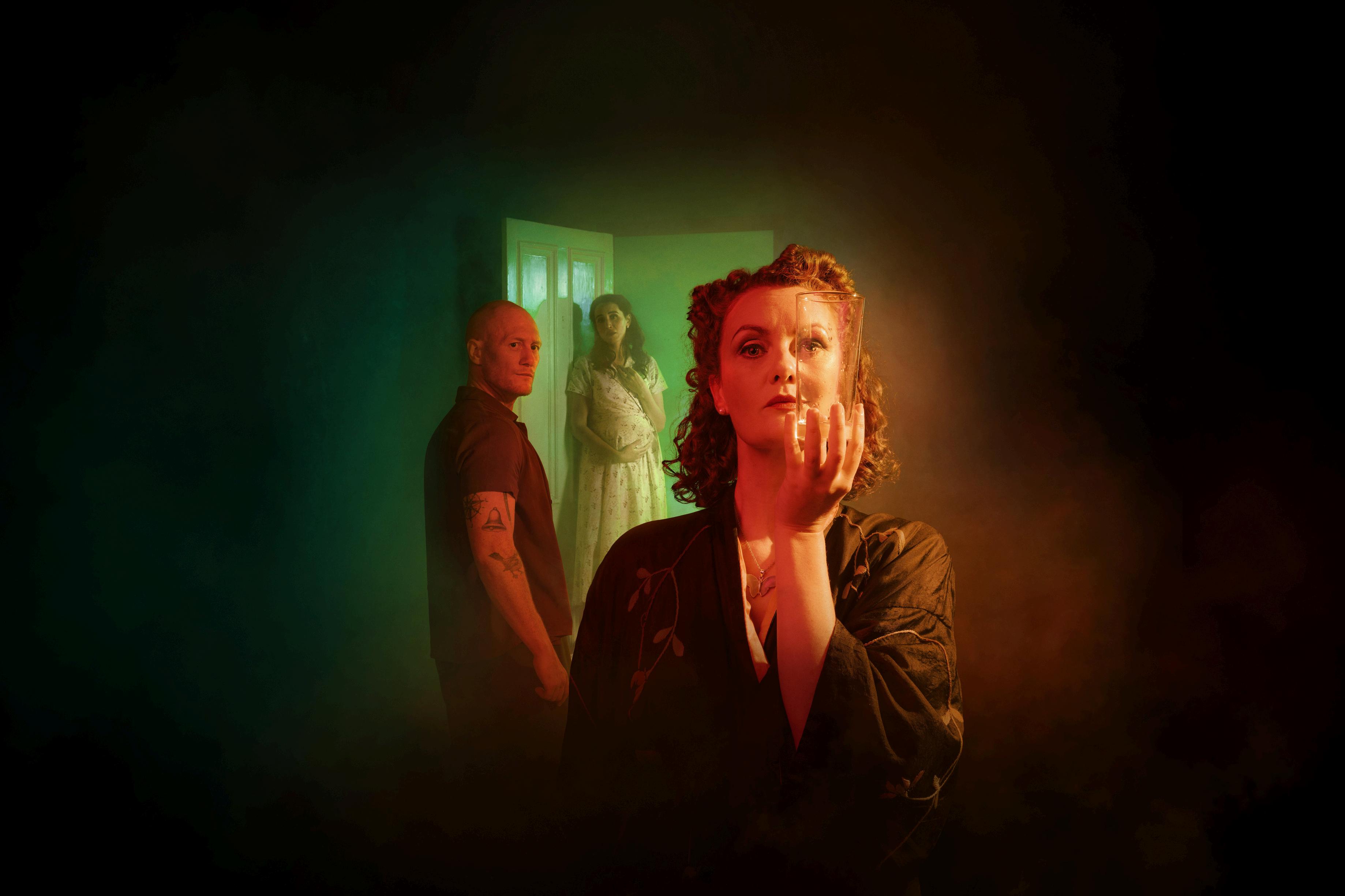



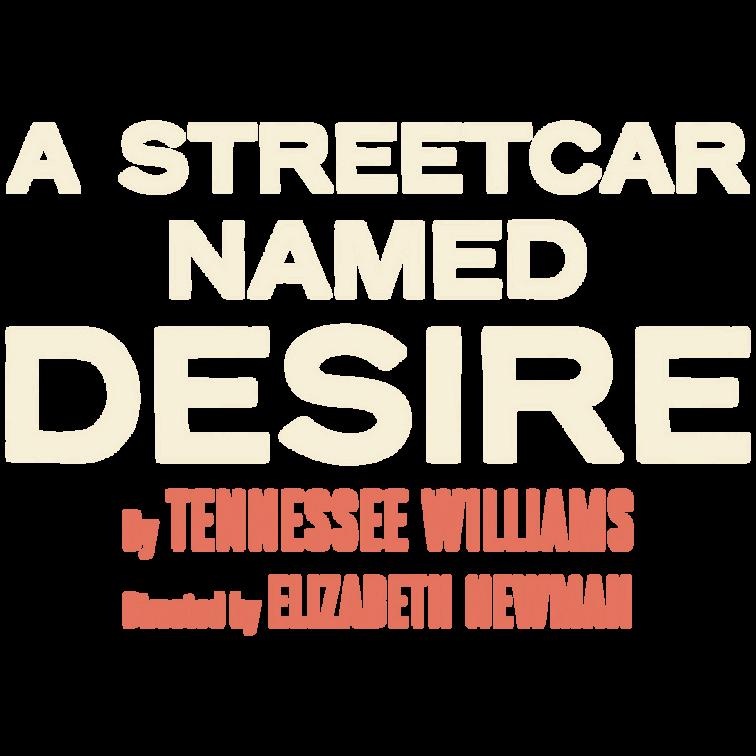

Extension

Character
Activity: discussion points
Interview with the Director: Elizabeth Newman Cont.
Interview with the Designer: Emily James Cont. Cont.

Note from rehearsals: Matthew Trevannion
Note from rehearsals: Nalini Chetty

The Royal Lyceum Theatre Edinburgh is delighted to present this Education Pack to accompany the production of A Streetcar Named Desire. Working closely with the cast and creatives involved in the production, we have curated a variety of visual and written material which we hope will support teachers and students in their explorations and reflections on the production.
We have also included information on our 24/25 Schools Workshop programme, which details further ways in which our Creative Learning department can enrich student experience of the production and support studies.
New Orleans 1940s Blanche DuBois arrives at her sister’s tiny apartment in the lively French Quarter of the city, her world falling apart and haunted by the loss of the family’s luxurious Southern mansion. With broken dreams and a desperate desire to cling to her freedom, Blanche seeks comfort from her sister, Stella But as tensionsand passions - rise, Blanche finds herself thrown into a catastrophic confrontation with Stella’s husband, Stanley.
Generally regarded as one of the finest plays of the twentieth century, A Streetcar Named Desire is also considered by many to be Tennessee Williams’ greatest work. It first premiered on Broadway on 3 December 1947, launching the careers of, amongst others, Marlon Brando, Jessica Tandy and Kim Hunter The London production opened in 1949, directed by Laurence Olivier and featuring Vivien Leigh as Blanche. In 1951, the play was adapted for the screen starring Marlon Brando and Vivien Leigh, and won four Academy Awards


Born Thomas Lanier Williams III, Tennessee Williams (1911 - 1983) explored passion with daring honesty and forged a poetic theatre of raw psychological insight that shattered conventional proprieties and transformed the American stage. The autobiographical play The Glass Menagerie (1945) brought what Williams called “the catastrophe of success ” He went on to win two Pulitzer Prizes for A Streetcar Named Desire in 1948 and Cat on a Hot Tin Roof in 1955 Among his other masterpieces are Vieux Carre, Sweet Bird of Youth, The Rose Tattoo, Orpheus Descending, The Night of the Iguana and Camino Real
This production of A Streetcar Named Desire ran at Pitlochry Festival Theatre between 2 June - 30 September 2023, and was presented at The Lyceum between 24 October - 9 November 2024
KIRSTY STUART
Blanche DuBois
DEIRDRE DAVIS
Eunice Hubbell
PATRICIA PANTHER
Woman and as cast
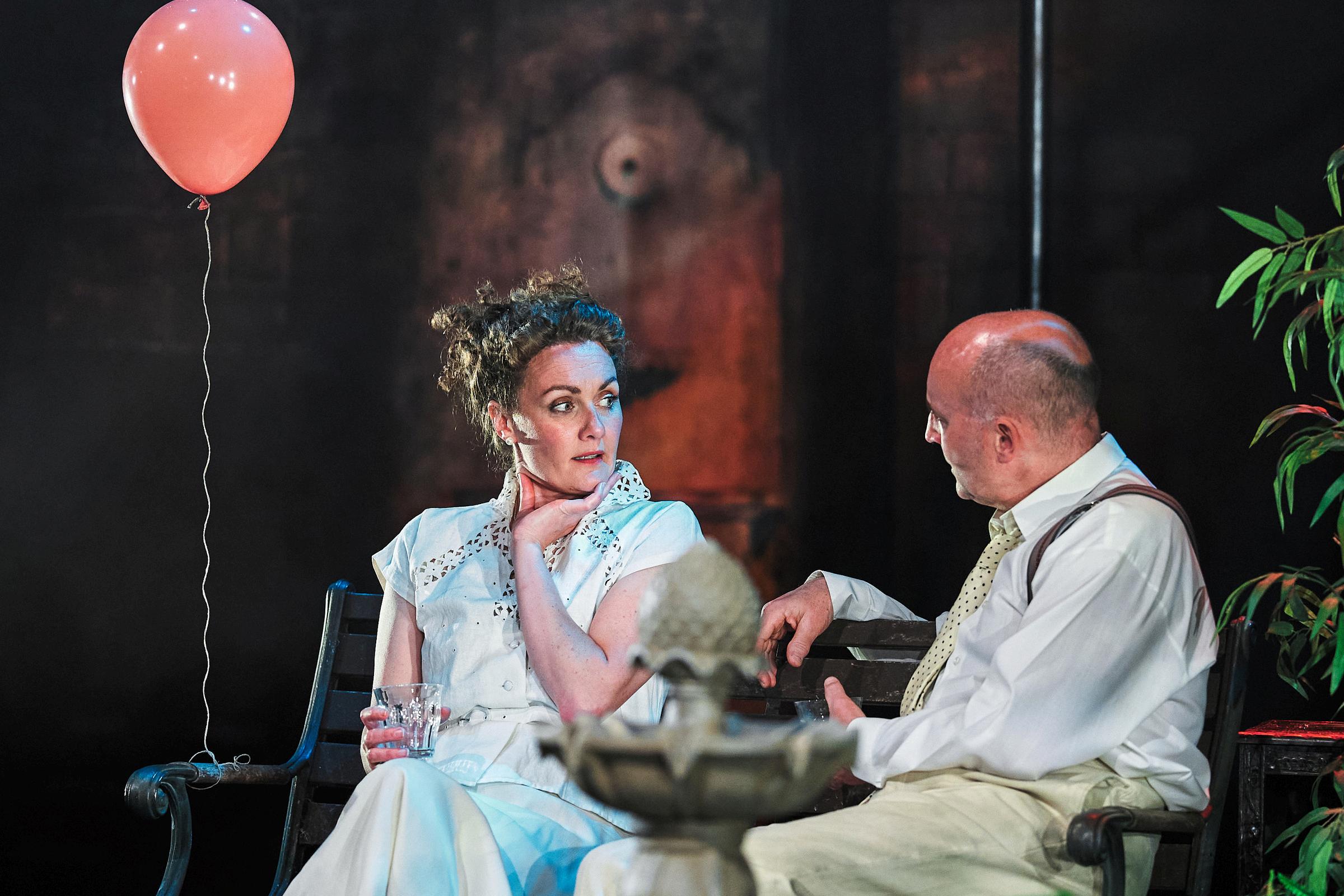
NALINI CHETTY
Stella Kowalski
OLIVER COOKSON
Steve Hubbell
MARC SMALL
Pablo Gonzales and as cast
MATTHEW TREVANNION
Stanley Kowalski
KEITH MACPHERSON
Harold Mitchell
JESSE FOX Drunkard/Sailor
TENNESSEE WILLIAMS ELIZABETH NEWMAN
Writer Director
EMILY JAMES PIPPA MURPHY
Costume & Set Designer Composer & Sound Designer
JEANINE BYRNE
ROBIN HELLIER
Lighting Designer Fight Director
“I believe A Streetcar Named Desire is one of the greatest plays ever written. Tennessee Williams wrote this drama with a very clear objective: to help humanity get to know itself better and well enough to concede that no person has a monopoly on right or virtue any more than they have on ‘being evil’. He was determined to be honest about the contradictions that all human beings possess within themselves. He beautifully draws the inescapable duplicity that everyone who lives and breathes is afflicted by.
“What makes it an exceptional play is Williams demands we face up to the truth that in this life there are no villains or heroes instead just people making decisions. I cannot wait to bring this play to life for audiences this Summer. Audiences can expect to be transported to 1940s New Orleans and, whilst bathing in this setting, experience a compelling family drama with the chance to spend time with some of the world’s most legendary characters. We can promise it’ll be intense and powerful thanks to the Theatre’s fantastic Ensemble. great creative team and Williams’ astonishing writing leading the charge.”

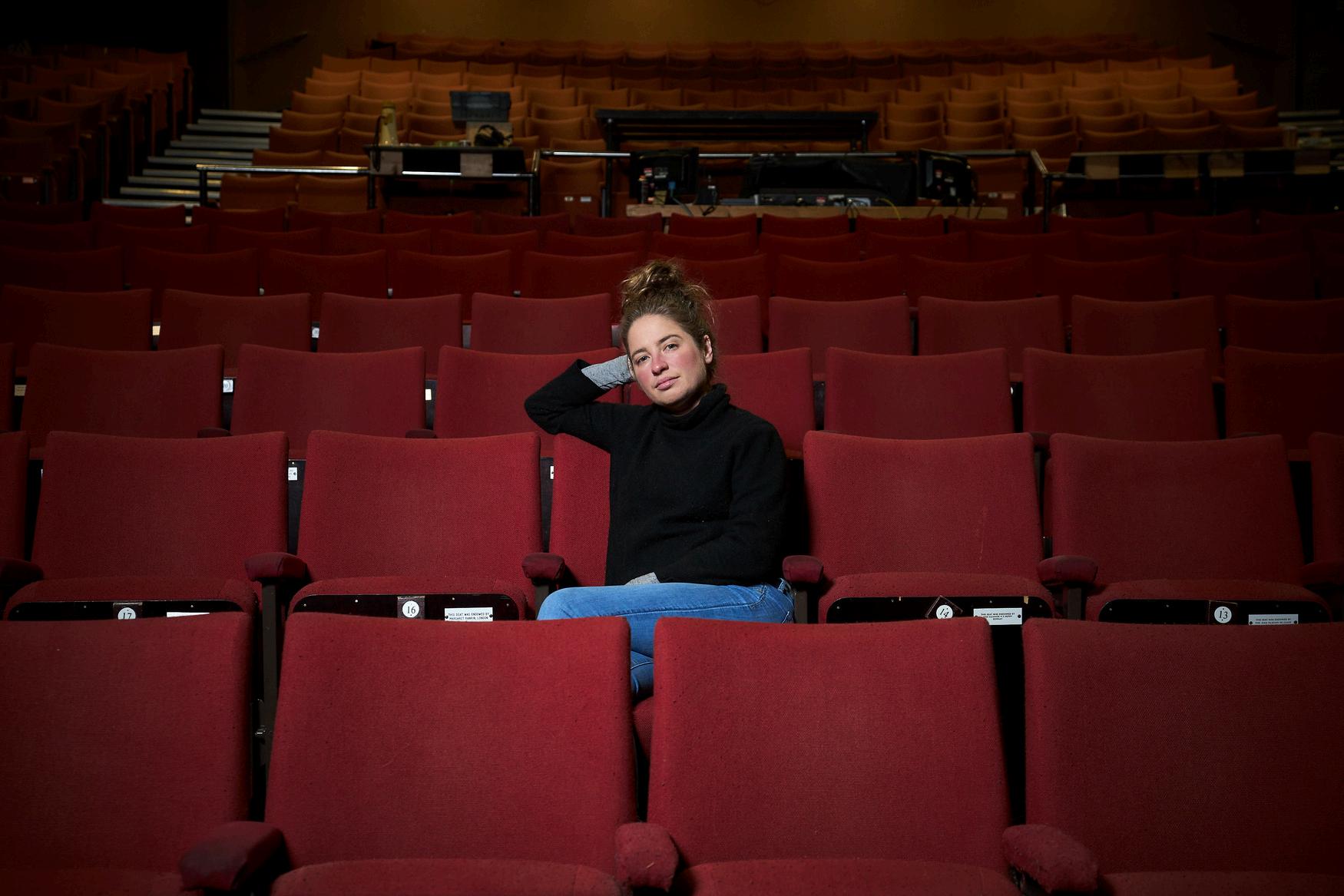
ELIZABETH NEWMAN, DIRECTOR

Stella’s older sister. She is a sensitive, fragile woman from a Southern aristocratic background but is now destitute after losing the family home, Belle Reve She was formerly a high school English teacher in Laurel, Mississippi, but lost her job after having an affair with a teenage student. She is very concerned with her appearance and tends to avoid reality, preferring to live in her own imagination As the play progresses, her instability grows and she is eventually committed to a mental institution.
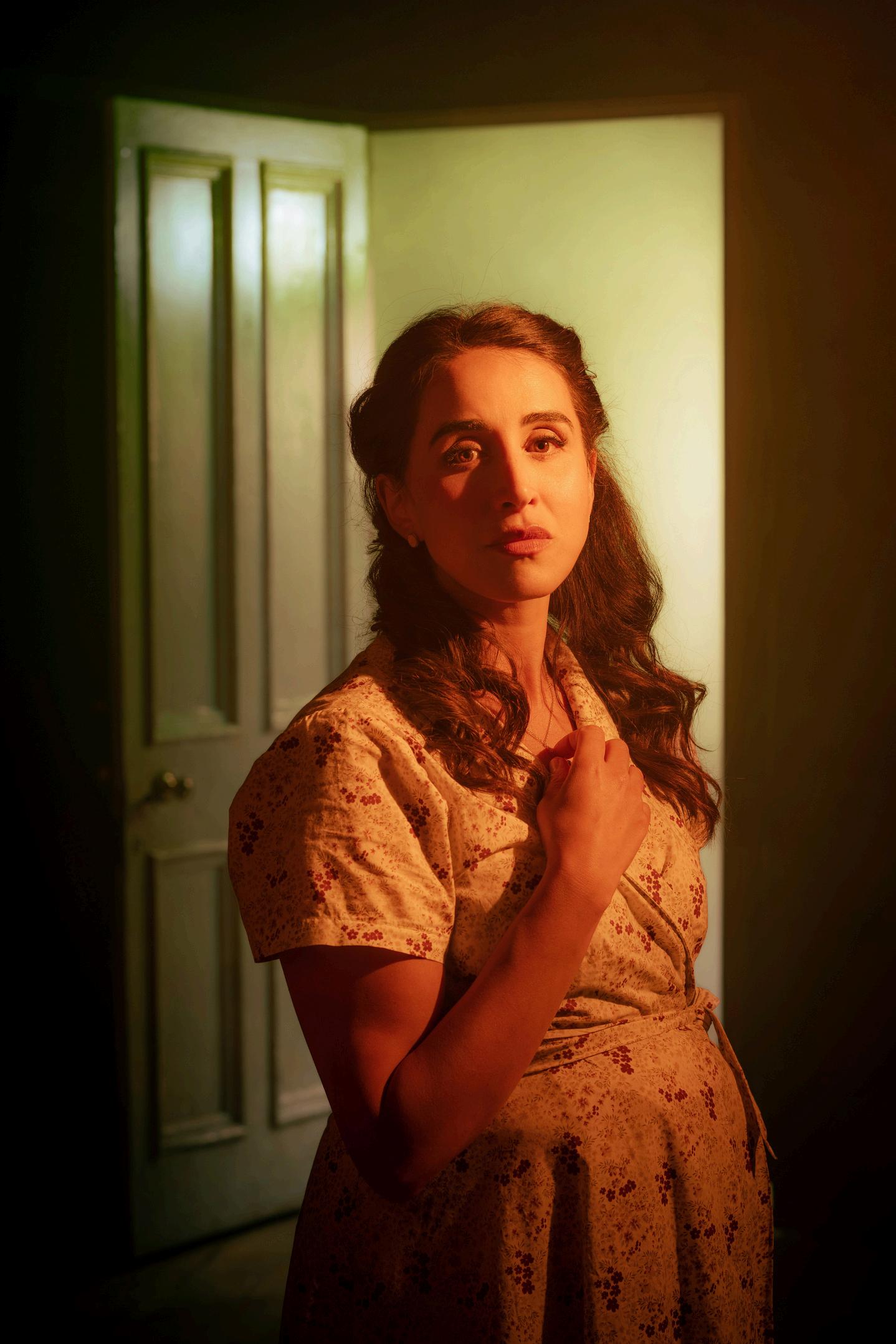
Blanche’s younger sister and Stanley’s wife. Stella does not display her genteel background in the same way as Blanche, but it visibly sets her apart from the grittier nature of her New Orleans friends Although she loves Blanche and is wistful of Belle Reve and their upbringing, she has chosen her life with Stanley and has no desire to return. She is the calm and reasonable foil to Blanche’s outbursts and the gentle, feminine opposite to Stanley’s violent masculinity - their physical relationship creates a deep bond between them.
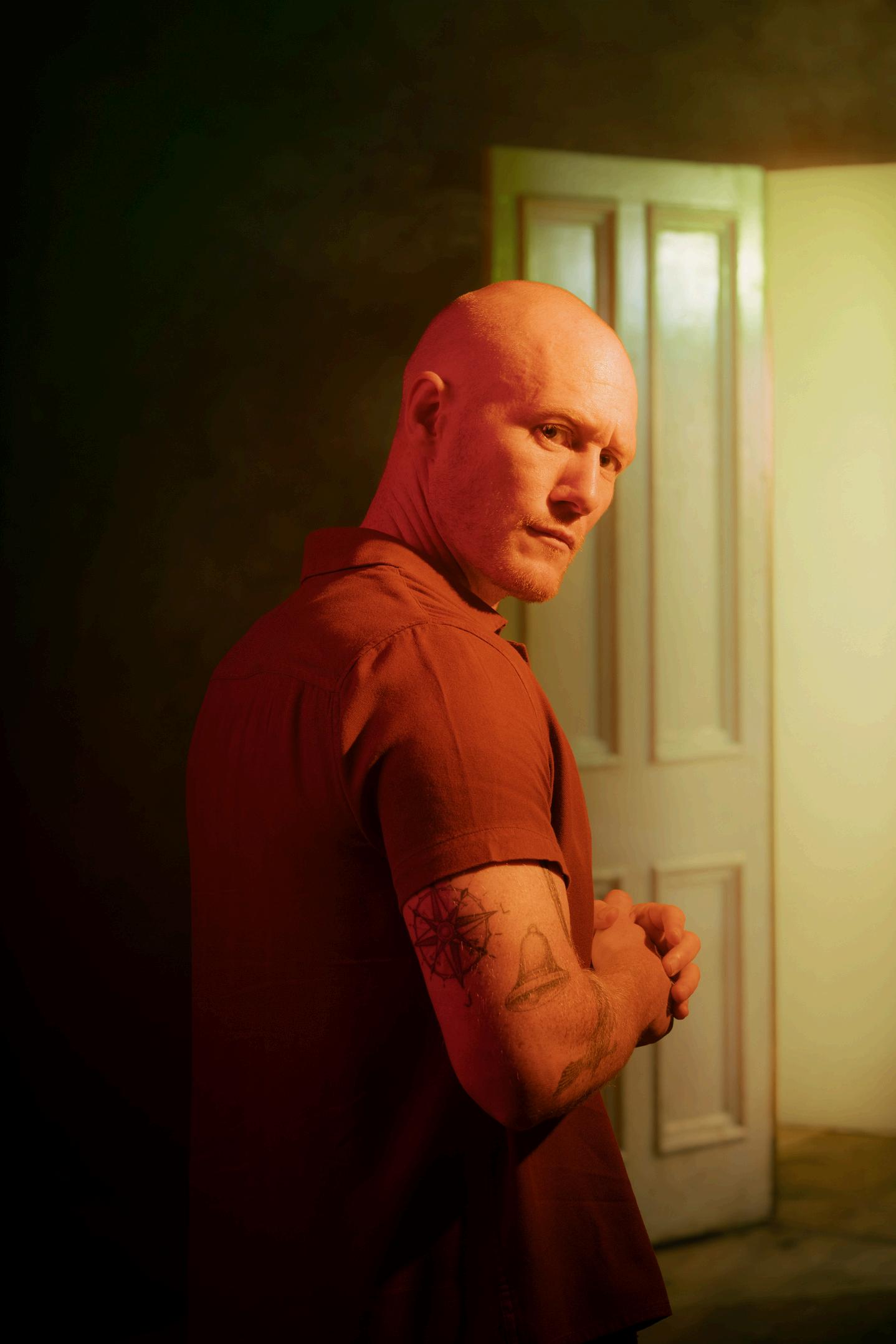
Stella’s husband, who fought in World War II and now works as an auto-parts salesman He is passionate and fiercely loyal to his friends, but is also proud, brutish and dominant, with a quick and violent temper. He sees everything in a brutally realistic light and does not have time for Blanche’s fantasies and social pretensions, behaving in a relentlessly cruel way to her throughout the play and showing no remorse for his actions.
Stanley's friend from the army. Although he is clumsy and has ‘unrefined’ interests such as bodybuilding and poker, he is better-mannered than Stanley and has a great devotion to his dying mother. He doesn’t fit Blanche’s vision of a chivalric hero, but they bond over their lost loves –although he is ultimately unable to accept her past
Stanley and Stella’s neighbours, landlords and close friends. They represent the coarser life that Stella has chosen for herself – their relationship mirrors the dynamic of the Kowalskis, involving both abusive and intimate episodes


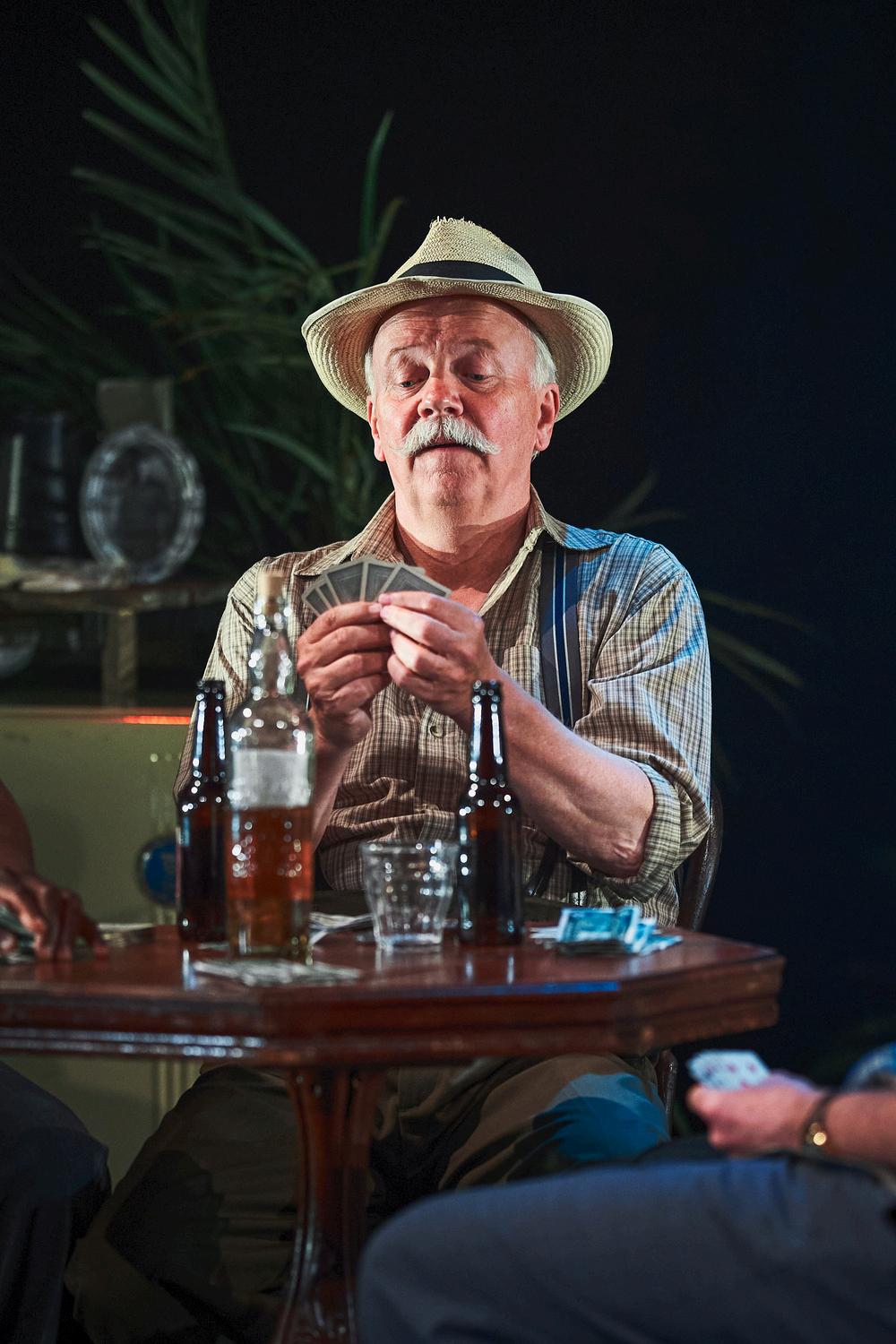
Blanche DuBois arrives in the French Quarter of New Orleans to visit her sister, Stella Kowalski. She is immediately taken aback by the rundown appearance of the neighbourhood While waiting for Stella, Blanche searches the apartment for a drink When Stella arrives, Blanche openly criticizes the small, shabby space. She reveals that she needed a break from teaching because her nerves are shattered. Concerned about the apartment’s limited space, Blanche hesitates to stay but admits she can’t bear to be alone
Blanche then shares that their ancestral home, Belle Reve, has been lost. As Stella steps away to the bathroom, her husband, Stanley, enters and meets Blanche for the first time Stanley’s probing questions about her past, particularly her previous marriage, unsettle Blanche, making her feel ill and faint.
The next evening, Stella and Blanche plan to go out for dinner and a movie while Stanley hosts a poker game with his friends. Before they leave, Stanley demands to know how Belle Reve was lost Blanche tries to explain and hands him all the relevant papers During this tense exchange, Stanley accidentally reveals that Stella is pregnant Blanche is thrilled by this news, believing that the child might restore their family’s legacy.
Later that night, when Stella and Blanche return from the movie, the poker game is still ongoing. Blanche flirts with Mitch, one of Stanley's friends, who appears more sensitive than the other men While Mitch and Blanche chat in the next room, Stanley grows increasingly irritated, especially when Blanche turns on the radio. In a fit of rage, he throws the radio out the window and strikes Stella when she intervenes. The other men restrain Stanley, and Blanche quickly takes Stella upstairs to safety However, once Stanley calms down, he calls out to Stella, and she returns to him
The following morning, Blanche urges Stella to see that Stanley’s violent behaviour is unacceptable She is appalled that Stella went back to him after the previous night’s events. Stella, however, reassures Blanche that Stanley was gentle afterward and that she loves him deeply Unbeknownst to Blanche, Stanley overhears this conversation.
Blanche and Stella overhear a quarrel between their neighbours, Steve and Eunice, after Eunice accuses Steve of infidelity. As Blanche prepares for a date with Mitch, she confides in Stella that she desires Mitch because she is exhausted from fighting against the harshness of life After Steve and Eunice reconcile, they follow Stella to a bar to meet Stanley. Just before Mitch arrives, a young paperboy stops by and Blanche impulsively kisses him, reminded of her late, young husband
After their date, Blanche invites Mitch back to the Kowalski apartment for a drink They discuss how Mitch met Stanley, Blanche’s age, and the tragic story of her husband’s suicide after she discovered his affair with another man. Mitch comforts Blanche, expressing that they both need each other
It is now mid-September, and Stella is preparing a birthday celebration for Blanche Stanley returns home with news about Blanche’s scandalous past in Laurel, revealing that she was forced to leave the town due to her wild behaviour. He tells Stella that Mitch won’t be coming over and that Blanche is expected to leave on a bus the following Tuesday When Blanche emerges from her bath, she senses something is wrong but Stella reassures her that everything is fine.
During Blanche’s birthday dinner, tensions escalate as Stanley lashes out at both Blanche and Stella. Disappointed by Mitch’s absence Blanche tries to call him, but he doesn’t answer She further enrages Stanley by insulting him, and he retaliates by giving Blanche the one-way bus ticket back to Laurel. Stella’s labour begins and she is quickly taken to the hospital.
Later that night, Blanche, now heavily intoxicated, is confronted by Mitch about her past She initially denies everything but eventually admits that after her husband’s death, she sought solace in brief encounters with strangers. Mitch then tries to get her to sleep with him, but Blanche demands marriage Mitch declares she isn’t good enough for him and Blanche throws him out
Later that same night, Stanley returns from the hospital to find Blanche wearing an old, faded evening gown He offers her a drink to celebrate the new baby, but Blanche declines, visibly frightened. Stanley confronts her about all the lies she has told and as Blanche becomes increasingly distressed and tries to leave, Stanley blocks her way, and it is implied that he rapes her
Three weeks later, Stanley and his friends are playing poker while Stella packs Blanche’s belongings, awaiting the arrival of a doctor and an attendant to take Blanche to a mental institution. Stella and Eunice discuss Stella’s refusal to believe Blanche’s claim that Stanley raped her Blanche, under the delusion that an old suitor is coming to take her on a cruise, panics when the doctors arrive. She tries to flee, but Stanley and an attendant corner her. The doctor approaches her gently, and Blanche agrees to go with him, uttering her famous line about always depending on the kindness of strangers Stella, holding her baby, watches tearfully as Blanche is taken away, and Stanley attempts to comfort her.
The production makes use of a revolving stage that rotates at key parts of the play. A rich tapestry of night-life swirls around the dilapidated apartment where most of the action takes place, as it pivots from Stella and Stanley’s cosy love nest to Blanche’s claustrophobic cage
The set allows us to see both internal and external locations, including the street (the space around the revolve) and the metal fire escapes
Most of the action takes place in Stella and Stanley’s cramped apartment, and the revolve gives the audience the illusion of being able to follow the action and characters through the apartment in a voyeuristic way
There are very few solid walls on the set which allows the audience to easily see from internal to external locations This highlights the cramped conditions that Stella and Stanley live in, implying limited privacy. This idea is further enhanced by the use of backlit windows, through which shadows can be seen, particularly in the bathroom
The spiral staircase winding up the centre of the stage is reminiscent of old-fashioned carousel rides, while also echoing the inner state of Blanche’s fragile, tormented mind
Stanley’s colourful shirts, jeans and white vests communicate his working-class background which are in sharp contrast to Blanche’s background and aspirations.
Blanche’s costumes are of a much softer, delicate colour palette and are made out of luxurious fabrics such as silk, fur and wool She always /
looks like she is about to receive visitors which is very out of place in Stella and Stanley’s workingclass neighbourhood.
When Mitch takes Blanche on a date his plaid shirt has been swapped for a pale beige suit, showing that he is trying to align with her standards and aesthetic.
Blanche’s penultimate costume, a green chiffon ballgown and tiara, show how far out of touch she has become with reality and her surroundings. She is barefoot and dishevelled.
Blanche’s final costume is a fitted dress and jacket in “Della Robia Blue, the blue of the robe in the old Madonna pictures” The outer poise and co-ordination of the outfit is at odds with her broken mental state, shown further by her panic, struggle and refusal to be led away juxtaposed with walking out on the arm of the doctor who treats her with dignity and politeness

The lighting in the production creates a mix of exposure and shadow, evoking a wild, dreamy carousel that reflects Blanche’s inner turmoil. The inclusion of atmospheric festoon lights add to the carnival atmosphere which is a usually a joyful thing, but is a direct juxtaposition to Blanche’s state of mind
Scene transitions take place in dim red light which highlights the functional elements of the street, such as the sink, fire hydrant and metal fire escape This is a reminder of the dirty, run-down nature of the neighbourhood.
When Blanche recalls memories of her past, chasing lights at the back of the stage represent a passing Streetcar which is often accompanied by music Throughout the play, this combination becomes increasingly blinding and discordant as Blanche’s mental state deteriorates.
When Blanche and Mitch return from their date they light a single candle as it is late in the evening. This is the only light remaining on stage at the end of Act 1, perhaps to represent Blanche’s hope that she has found happiness with Mitch
also the hopelessness that Blanche feels at this point in the play. This lighting also returns in the scene where Stanley rapes Blanche.
The play fades to black at the end, which is a contrast to previous, gentler lighting changes throughout the play.
Scratchy Jazz sounds are woven into the musical score to capture the hot, vibrant essence of New Orleans This also ties into the idea of the revolving stage being a vinyl record.
Recorded sound effects include cats fighting in the street, the sound of a streetcar passing by and various music tracks Blanche sings 'It’s Only A Paper Moon' live at the beginning of Act 2.
As the play progresses, the music used becomes more and more discordant, highlighting Blanche’s returning memories and deteriorating mental state.
The crackling static of a vinyl record can be heard throughout the final scene when Blanche is taken away by the doctor, perhaps signifying the end of her ability to keep up her delusions

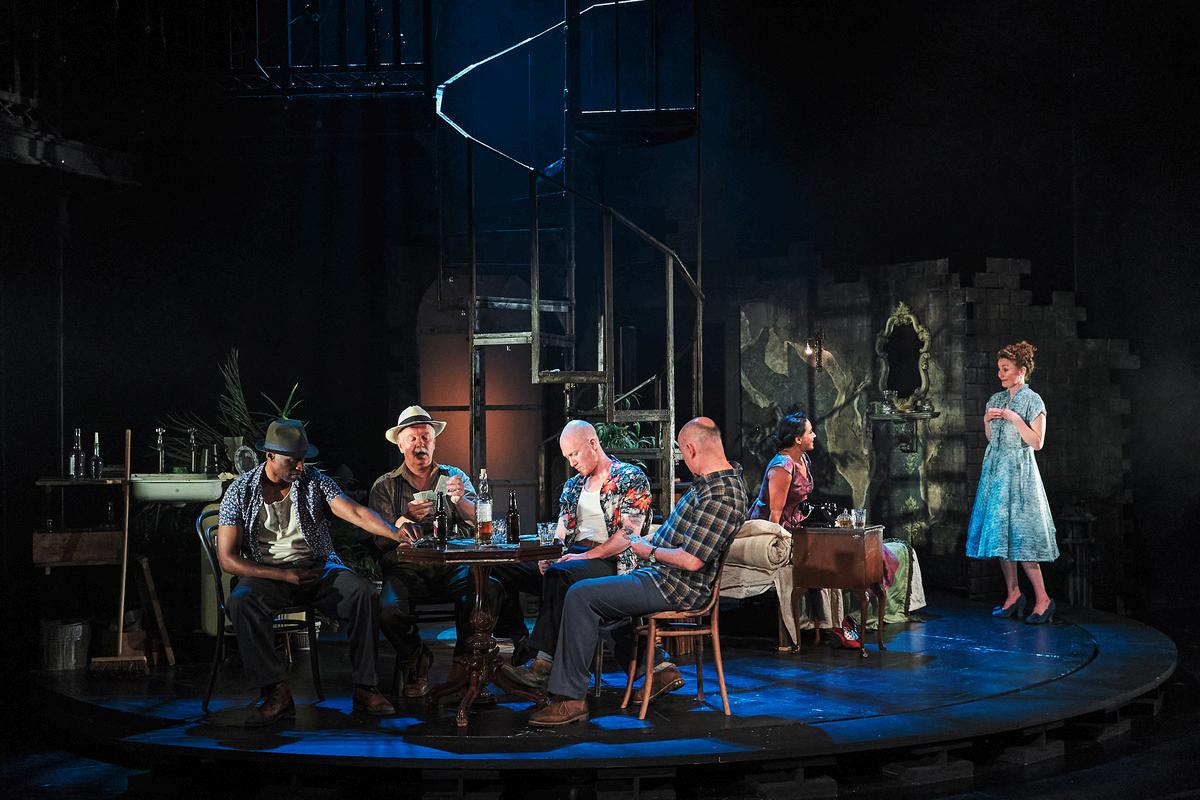
The lighting in the scene where Mitch visits Blanche for a second time is noticeably starker and colder than in previous scenes, and there is limited coloured lighting around the edge of the stage This is to reflect the late time of night, but
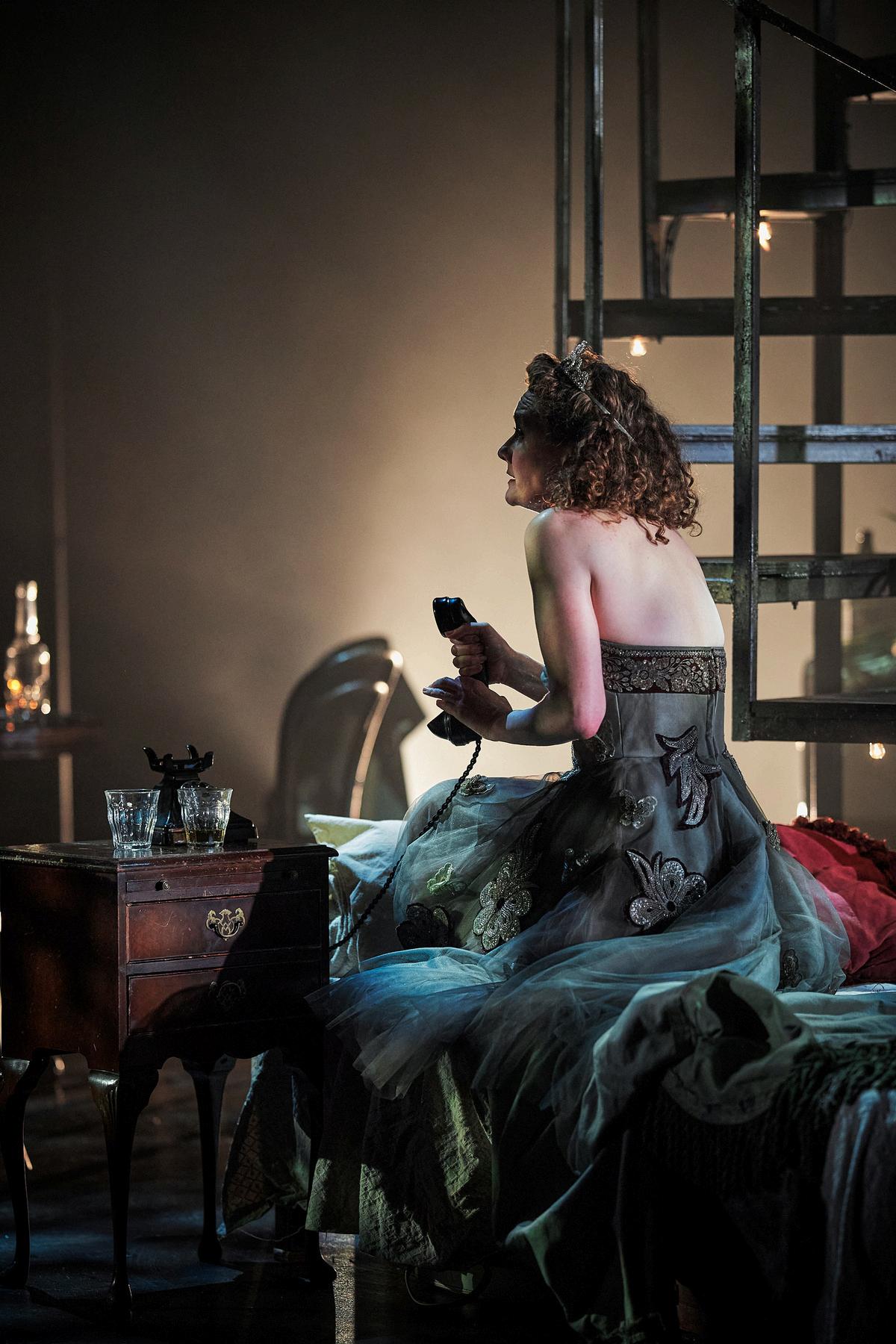
After seeing the performance, invite students to write a review. Encourage them to give their honest opinion without reading any published reviews and, if possible, without discussing the performance with one another in too much depth - this will empower them to explore their own thoughts, ideas and feelings about the performance without influence.
Explain to students that, while there may be mixed opinions on the performance, all are valid and part of this activity is to identify why they came to their opinion
Reviews should be between 200 - 300 words long and should take into consideration:
What happened in the play
How it happened (through acting or design concepts)
Why it was done
The audience response/reaction
Students can also provide a star rating for the performance between 1-5
Once students have written their reviews, they can read each others to compare opinions, or use the professional reviews listed in the next section of this pack to compare writing styles
The purpose of this exercise is to help students articulate the reasons behind the opinions they formed in the writing exercise Work with the class as whole to create 3-5 questions about the reviews they have written. For example:
How did you come to that opinion?
How would you have shown that differently?
Would you recommend the production? Why/why not?
Split the class into pairs and provide them with a way of recording their voice (e g iPad, phone or voice recorder). Avoid the use of video recordings as this can distract from focusing on verbal communication skills
In turns, students take the role of interviewer and interviewee, asking each other the prepared questions Ask students to complete the interview as if it were live on the radio, trying to avoid stopping and starting. Interviewers should be encouraged to ask follow-up questions or challenge answers to draw our the ideas being expressed
Once both interviews are completed, students should listen back to each and consider:
Vocabulary - is it repetitive, does it pain a picture in the listeners mind?
Articulation - is it clear and concise?
Accuracy - do they feel they accurately communicated what they wanted? If not, why might this be?
Students can also swap recordings with another pair and feedback on how it was received from someone external to the interview process

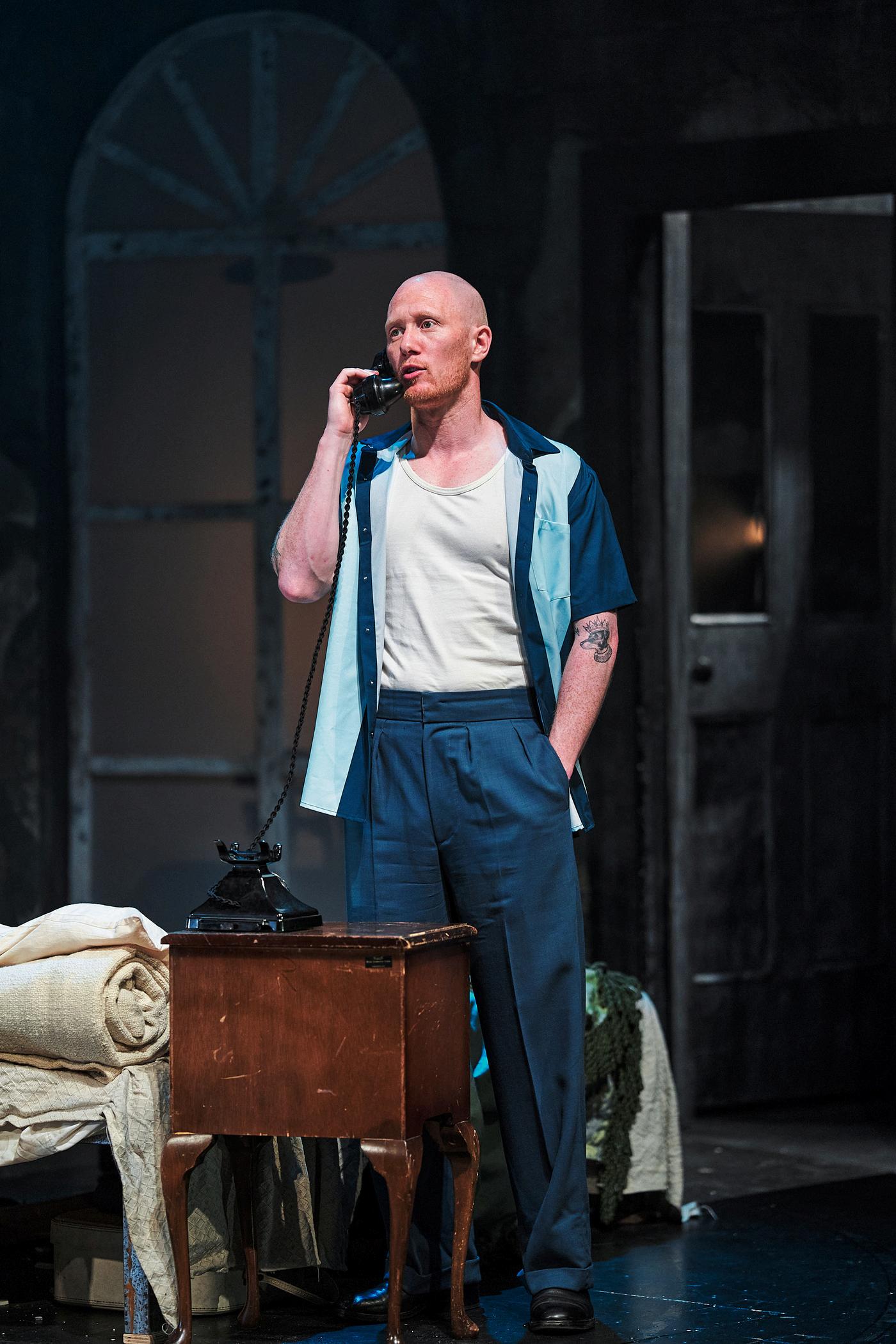
Here is a selection of professional reviews of the production that ran between 2 June30 September 2023 at Pitlochry Festival Theatre The Scotsman, 9 June 2023, by Joyce McMillan. Read here
The Stage, 8 June 2023, by David Pollock Read here
The Guardian, 8 June 2023, by Mark Fisher Read here.
Here are some useful discussion points to use with students after seeing the production - these could be discussed in groups or as a whole class.
What was the play/performance about?
How was this communicated through the design elements (lighting, sound, costume, set)?
What key moments or characters stood out and why?
What was the journey of a particular character throughout the performance and how was this communicated?
What relevance does the play hold for today and our local culture/society? You may want to encourage students to consider social, political and cultural issues that can be related to the performance.
What, if anything, did you learn through the performance?
Was there anything about the performance that you did not like or feel did not fit within the wider production? If so, why?
Is there anything students would have done differently in the performance? If so, how would they have done this and why?
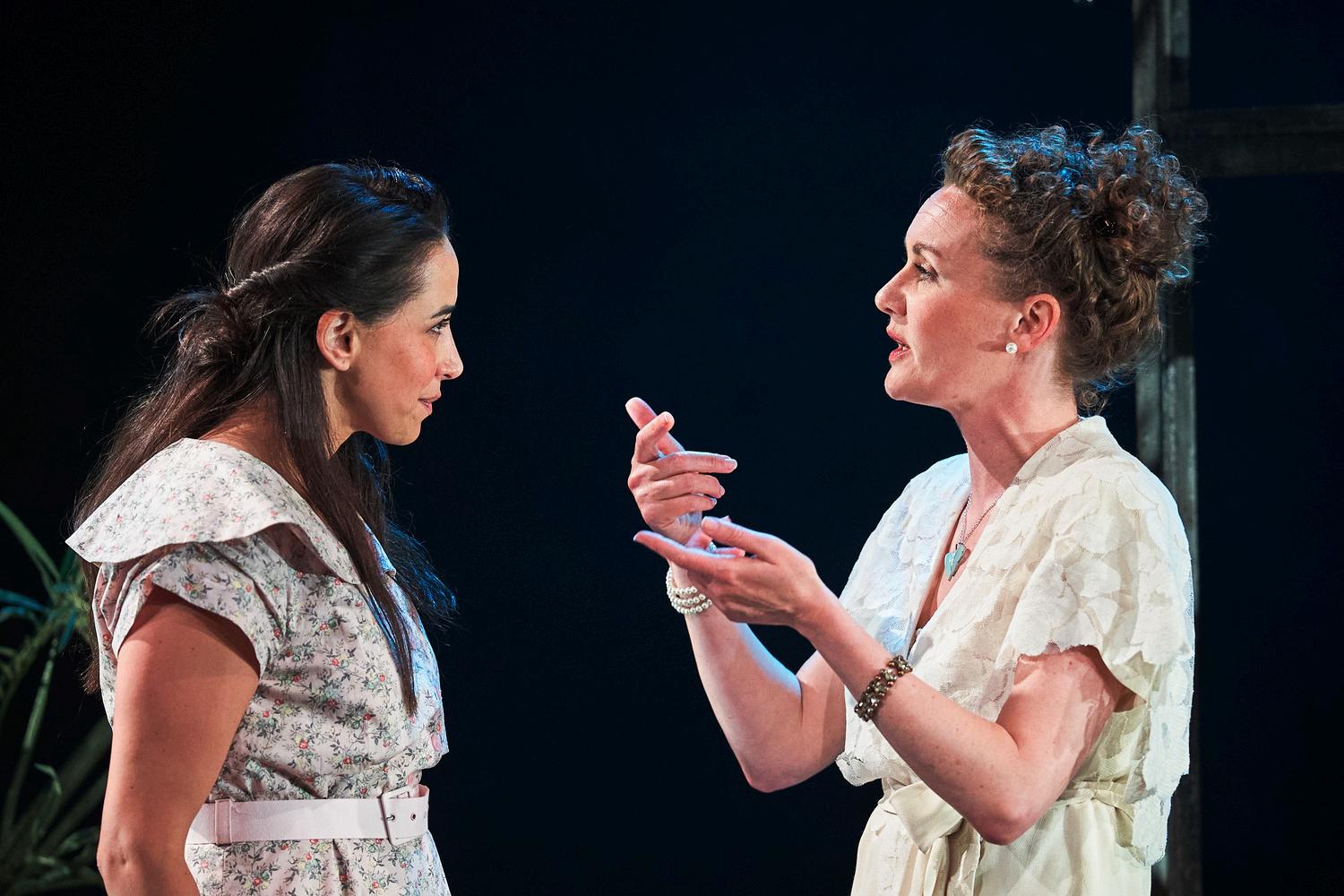
Why did you decide to present this production here and now?
I’ve always loved A Streetcar Named Desire; it’s a truly great play However, the themes and issues it addresses are just as important today as they were when Tennessee Williams wrote it. Themes such as women’s rights, power dynamics, toxic masculinity, mental illness, addiction, abuse, and fragility remain sadly relevant and resonate with today’s audiences.
What do you think Tennessee Williams’ intentions were in writing Streetcar, and how do you think these sit within a contemporary context?
Tennessee Williams' intentions in writing A Streetcar Named Desire were complex Initially, he simply wanted to write another play After experiencing writer’s block following The Glass Menagerie, he had to leave the city to find inspiration. He began working on a piece called The Poker Game, which eventually evolved into Streetcar
Williams was deeply interested in exploring the complexity of the human psyche. He understood that people are complex and full of contradictions, which is evident in the character of Blanche She is portrayed as both a bully and a snob, yet she is also a deeply vulnerable and fragile woman. Arguably, she abused a student with whom she had a relationship, but she has also been the victim of abuse by many men The grief of her young husband’s suicide, compounded by his being gay, adds another layer of depth to her character.
All of these brilliant ideas and interests in exploring human flaws undoubtedly fuelled Tennessee Williams’ writing Additionally, the play addresses the working-class Stanley’s desire to live out the American Dream. All of these themes
and ideas remain highly relevant to our contemporary context
What do you think the play is about, at its heart?
“Don’t hang back with the brutes ” We are all fragile and vulnerable, and we should strive to love and show compassion to each other. Let’s resist societal constructs that destroy and harm the most vulnerable among us
What can you tell us about the world of the play and this production?
The design is true to the play:
It captures the essence of New Orleans hot and vibrant.
It reflects the setting of a tiny flat in the French Quarter
Our design is inspired by the record player and the Carousel Bar that Tennessee Williams frequented while writing the play.
The aural environment features jazz and carousel sounds
The lighting creates a mix of exposure and shadow, along with beautifully nuanced lights.
Together, the lighting, sound, and overall design convey the play’s age, beauty, and the intensity of its drama
What is your directional approach to Streetcar?
To deliver Tennessee Williams’ great play I see myself more of a midwife than an auteur. My role is to support everyone else to do their best work. With the ensemble it’s crucial to create a safe space so they can give dangerous performances and really take risks For the design team, my aim is to provide clear direction so they can fully explore and express their own creative responses.
What were the themes you focused on in the production?
Power, vulnerability, human fragility, morality and the destructive impact of societal structures and pressures that are unrelentingly brutal, especially to individuals like Blanche
Can you tell us a bit about your rehearsal process?
I always begin with the facts – they are vital Every decision the actors make must be rooted in Tennessee Williams' work; otherwise, it's easy to misstep, and the play can lose its clarity.
Once we’ve established the facts, we break the play down into units and beats, followed by a paraphrasing process This ensures everyone fully understands the meaning of the lines and brings the content as close to the self as possible. Other approaches include improvisation, and of course, getting things on their feet This is when the actor truly begins to use their body to explore the character, the environment, and the world of the play.
How did you collaborate with the rest of the creative team to create the production?
We had lots of meetings and discussion and, like with the ensemble, we always returned to: what does Tennessee Williams want? And then we’d work hard to deliver his play
What stands out about this production for you and why?
The company are amazing I only wish Tennessee Williams could see them and experience them doing his extraordinary play And then there are a couple of specific moments like when the men walk into the space upstage, back-lit as the revolve is turning and Pippa’s sound is penetrating the space It makes me tingle And lastly some key lines from Kirsty (who plays Blanche) that will always ring in my ears - “Don’t hang back with the brutes” and “I’ve always depended on the kindness of strangers. ”
What do you want audiences to take away from the production?
I hope audiences leave with a deep emotional understanding of the complex characters and their struggles. I want them to feel the tension between the reality these characters face and the fantasies they’ve created for themselves, which cause devastation and pain I want them to truly understand and reflect on the themes of power, vulnerability, and human fragility that are steeped in every scene of the play. Ultimately, I hope they connect with the play’s raw emotional truth, leaving them with questions about morality, empathy, and the destructive impact of societal structures and pressures that are unrelentingly brutal, especially to individuals like Blanche.

. Can you tell us about how your role as a designer worked alongside the director and their vision?
together Our initial ideas for what we wanted the play to be, visually, were very much in tune, which made the design process flow easily
The set and costume designer comes on board much earlier than the rest of the team, and the early meetings with the director are crucial to establish a strong working bond and connection. Some directors bring to the table a very clear vision of what they have in mind for the design, others want to give the designer a blank canvas At other times there will simply be much back and forward and brainstorming together, to allow a design to emerge in a more organic way. Elizabeth and I had worked on a project together prior to Streetcar, which meant we started with a really good sense of how the other worked, and had developed a very strong creative language
What can you tell us about the setting of the play and the world of the production?
There have been many different presentations of Streetcar over the years, ranging from faithful representations of the period to more abstract, sparse, modern approaches My instinct was that the design needed to be a slice of New Orleans, viewed under the microscope. New Orleans in the 40s was bursting with life - specifically nightlife! Stanley’s line to Stella about ‘getting the coloured lights going’ jumped out as a starting point This rich tapestry of night-life swirls around the dilapidated apartment where most of the action .
takes place, as it pivots from cosy love-nest (Stella and Stanley) to claustrophobic cage (Blanche).
How did you come up with the concept for your design? Where did you draw inspiration from?
During my research, I found a wonderful book about the hidden gardens of the French Quarter and was particularly drawn to these secret courtyards. I loved the flashing glimpses of this hidden world, seen from the street through romantic wrought-iron gates. The regimented rows of shutters towering above - paint peeling in the humid air - hinting at the numerous lives unfolding all around these quiet green spaces Verdant foliage and the trickle of water from fountains, cracked stone, distressed tiles and shadowy arches all lent themselves perfectly to Stella and Stanley’s world
Most of the play takes place in Stella and Stanley’s cramped apartment and I discussed with Elizabeth the idea of motion - the audience being able to follow the action and characters through the apartment, in a voyeuristic way A revolving stage was the perfect solution. I also discovered a famous Carousel Bar in the historic New Orleans Hotel Monteleone, where customers would sit at the bar as it turned round and round, and learned that none other than Tennessee Williams himself had spent time there around the time he wrote Streetcar. I divided the revolve into three ‘pie pieces’ and from there the design unfolded very quickly: kitchen, bedroom, courtyard garden (that would serve as the romantic setting for Blanche’s date with Mitch) The spiral staircase winding up the centre of the revolve to the upstairs apartment twisting and turning and glinting in the light, reminiscent of old-fashioned Carousel rides while also echoing the inner state of poor Blanche’s fragile, tormented mind
designer I needed to think carefully about how these were incorporated into the design. On my first reading of the script I scribbled the words “Stage Directions - SACRED”
Particular lines that jumped out at me and directly inspired the design include: “…when people are soft - soft people have got to court the favour of hard ones, Stella Have got to be seductive - put on soft colours, the colour of butterfly wings, and glowmake a little temporary magic ” And “ don't you just love these long, rainy afternoons in New Orleans when an hour isn’t just an hour - but a little bit of eternity dropped in your hands…”. And “..it’s gonna be sweet when we can make noise the way we used to and get the coloured lights going ”
How did you collaborate with the rest of the creative team?
As set designer you work very closely in tandem with the lighting designer. Jeanine Byrne took my ideas and breathed light into every nook and cranny of the set She fully embraced my concept of the revolving apartment creating a wild, dreamy carousel that reflects Blanche’s inner turmoil, and included atmospheric festoon lights that added to the carnival atmosphere. There are so many specific pieces of music mentioned in the play which I enjoyed discussing with sound director Pippa Murphy I shared with her my idea of the revolve being a vinyl record, and loved the hints of scratchy vinyl jazz woven into her musical score.
What challenges did you encounter during the design process and how did you navigate them?
. What did you draw from the text to inform your design?
Tennessee Williams gives very detailed descriptions and stage directions, frequently referring to specific colour/props/visual motifs These are all integral to the action, so as a
The spiral staircase proved quite a challenge from a structural point of view I had to be very clever with my decisions about where to place each of the three spaces, to accommodate the stairs The ‘bridge’ that connected the top of the stairs to the other apartment had to be designed in a cantilever style, as there could not be any supports below, due to the revolve We also suspended the ‘bridge’ - I love working with the brilliant production teams behind the scenes - builders and engineers who really enjoy being handed a challenge and coming up with the solution
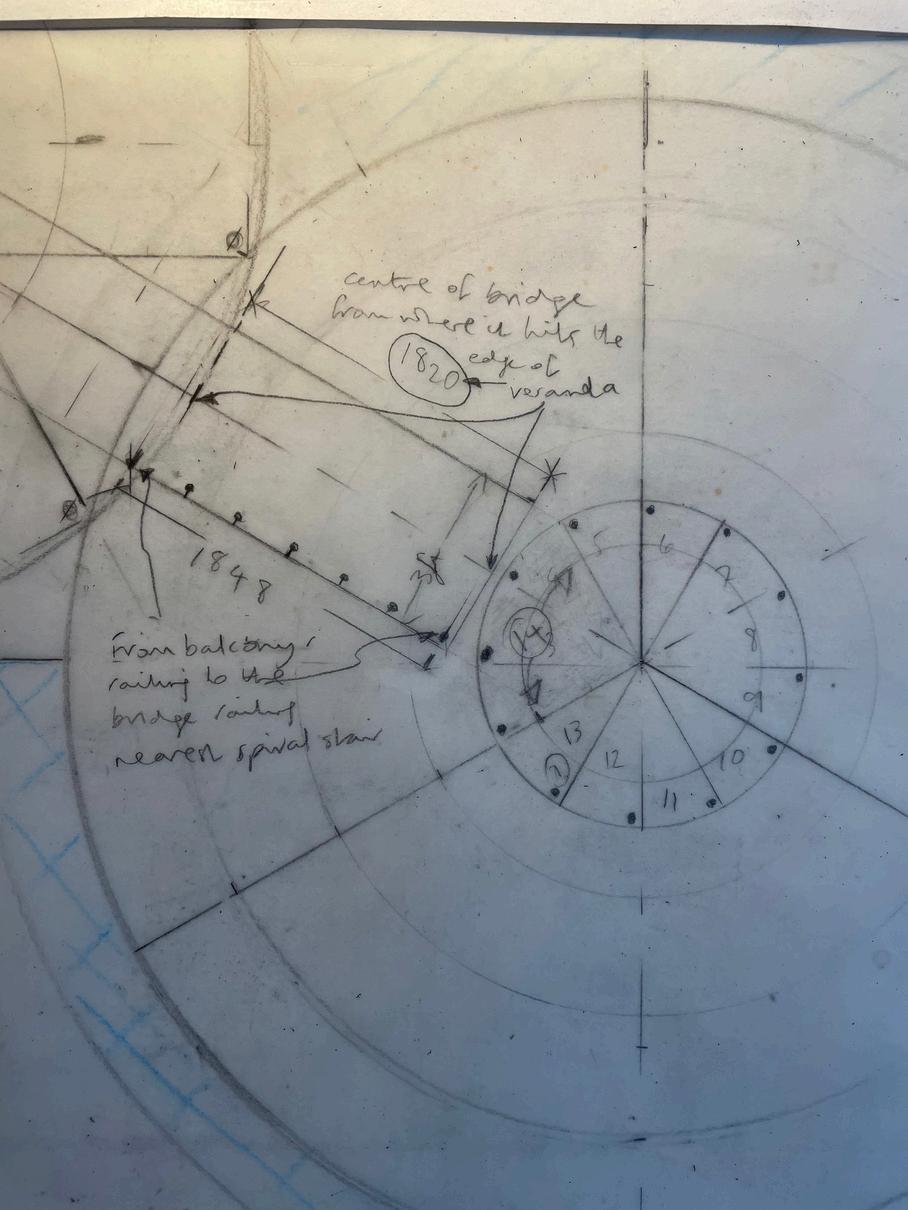
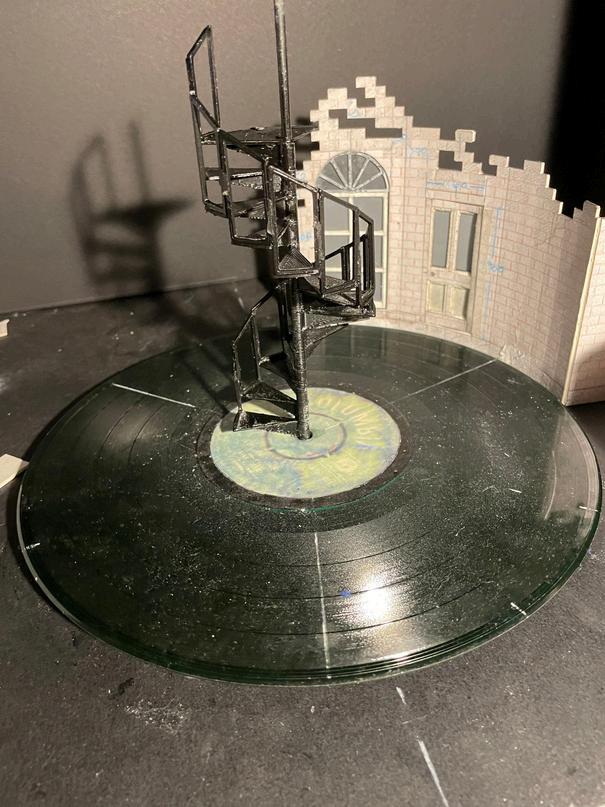
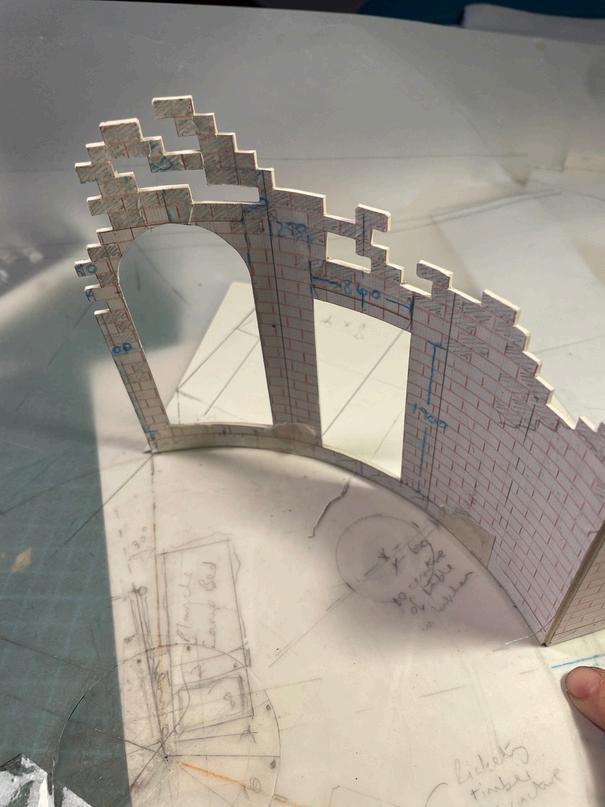

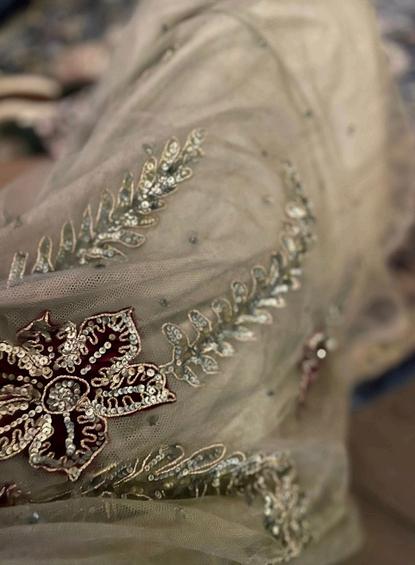
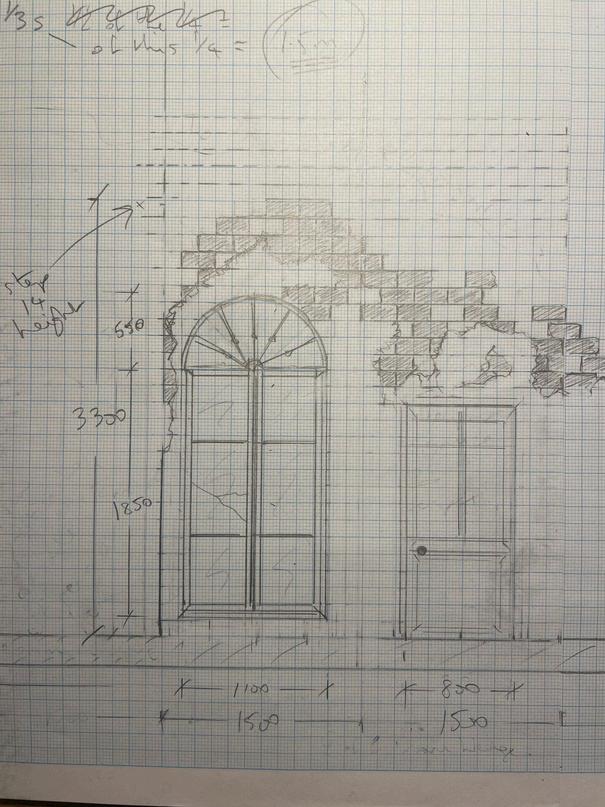
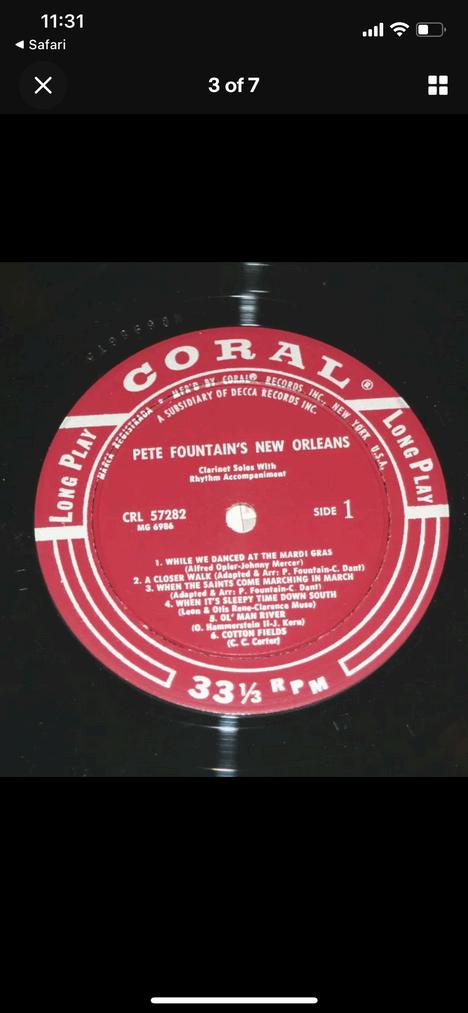
My first experience of Tennessee Williams’ writing was tearing tickets on Summer and Smoke in the West End. I watched it night after night and found new things within the writing with each and every show Few writers can offer such texture
I have come to understand that I am an actor who prefers to make their decisions within the rehearsal room I try to begin the process without any preconceived ideas of how a character should be played and once inside the room I strive to be as open as I can to what is being found by the collective. No theatrical performance exists by itself, and any successful production is one of collaboration and unified purpose
It is hard to believe, given the lasting impact that Streetcar has had on theatre, but in some quarters there were aspects of the play that were considered unstageable when it was first produced Tennessee Williams didn’t shy away from the subjects of sex, violence, ambition and destiny. He examined the human condition with poetic incision and so the challenge is on two fronts The subject matter must be tackled with committed sensitivity, whilst the text demands a /
high level of technical skill Stanley Kowalski is someone who resorts to terrible acts within the play, but they are decisions that cannot be played as fated He is not the same person at the end of the play as he is at the start and that is because of decisions made with a specified logic; decisions that have an enormous impact on not only himself but those around him.
Style is a hard thing to quantify but I try to remain as truthful to the writing as possible Tennessee Williams is a bold and daring writer It is incumbent on any performer to match him as best they can. The beauty of his writing makes the audience complicit because they cannot help but be sucked in by it

Rehearsals are always unique to each production, but Elizabeth Newman places a lot of trust in her actors I therefore make it my mission to repay that trust
I discovered that Stanley is informed by the myth of the American Dream. He has sacrificed a lot for his country in World War Two and it is in being denied his ‘birthright’ of social betterment - as he sees it - by Blanche that fuels him to give in to his baser instincts. There are many significant moments in the play for each and every character but, considering this, I’d have to say that for Stanley it is when he discovers that Belle Vue has been lost
I would like audiences to take away from this production that great art can be born of the struggles of ordinary people, and that domestic abuse is something that we are still dealing with

What was your experience of this play/playwright before being involved in this production?
I studied Tennessee Williams in secondary school. I loved his plays. I had never heard anything like the language or seen human nature laid so open I acted in The Glass Menagerie at age 16 - playing Amanda Wingfield in a school production It probably did change the course of my life! I went on to study Drama academically. At 20 I directed A Streetcar Named Desire for the Drama society at the University of Bristol It has long been one of my favourite plays It feel strangely 'full circle' to be doing it now.
How did you prepare for your role? Were there any techniques you used in the rehearsal to develop your character?
Mainly I was led by the script We look at facts from the play to work out what is definite about the characters and to try not make assumptions. Then we might look at what we deduce also. We did also we did have a look into the period and the world of the play It helped me to imagine the physical heat and noise of New Orleans, also the world that Stella has left behind in Belle Reve. And to imagine the restrictions placed on women in the period, which creates the ‘container’ for the world I also had to try and remember a younger version of
of myself- how that first flush of love feels Then to really be present in every moment helps to let the character live in the present
Can you tell us about the style of your performance?
Stylistically the language is poetical, but the performance is naturalistic. What we are aiming for is emotional truth
What are some of the challenges of playing your character, and how did you navigate them?
Stella is strong in her own way. She is stubborn she know what she wants. I had to try and get the balance of strength and vulnerability that I think is there in the writing
Can you give us a bit of an insight into the rehearsal process?
There is normally some table work where we break the script down into units- this is to help align our interpretations of the script as a company Then we get it on it’s feet We have a fight director for any physically challenging sequences. Toward the end of process we add in props, bits of set. We block any set pieces of physicality with the fight director Eventually we move onto the set, which is like another character in this play It informs a lot of our movement and stillness.
What do you think is the most significant moment for your character?
I think maybe the moment happens off stage, when she squares in her mind that she will choose to believe her husband’s version of the truth over over her sisters It is at once a huge sacrifice and a survival technique
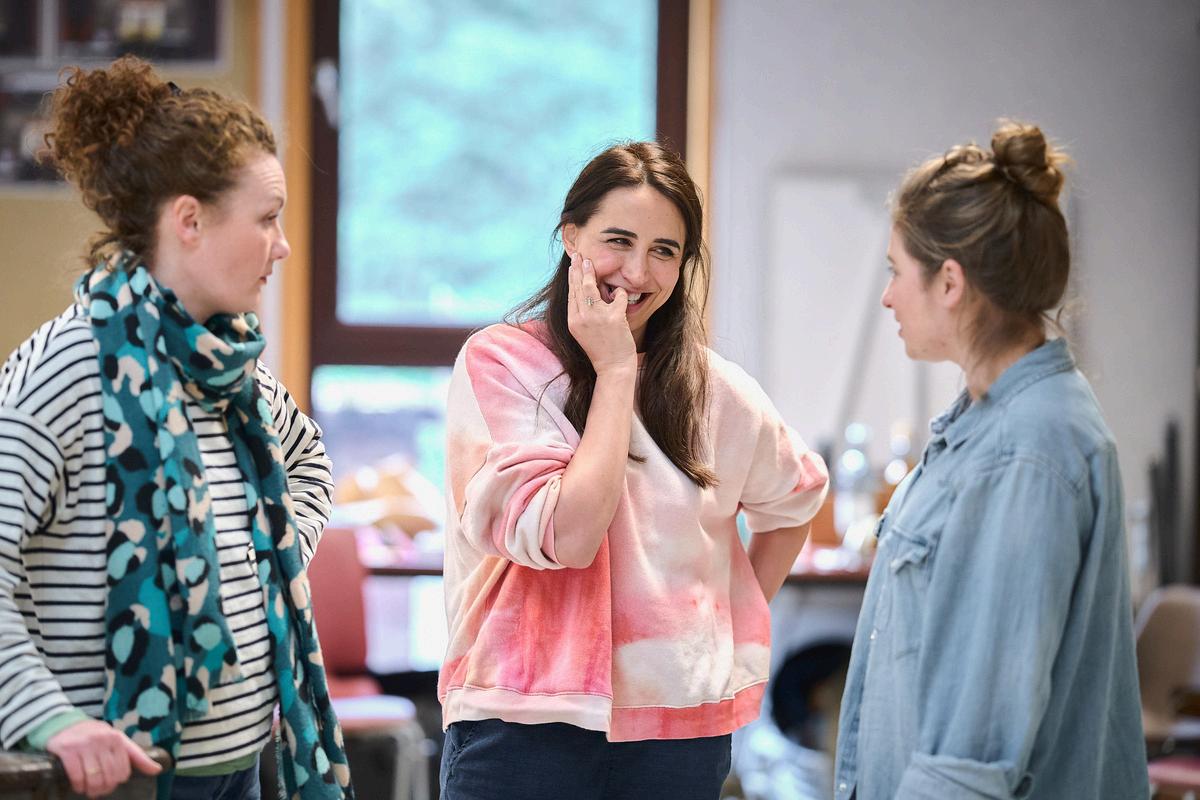
How did you collaborate with the director and other creatives on the process?
The director - in this case, Elizabeth Newman - sort of sets you up with all the tools you need to do the job The world is created, any questions can be bounced off them They will watch scenes and feedback and also run the room, which means creating a schedule and working environment. They also pull together the other departmentsdesign, lighting, set, crew So there is a cohesion to what is unfolding
I discovered that Stella is a survivor. And that comes at a cost Was there a discovery that you made about your character, either in rehearsal or in performance?
What do you want audiences to take away from the production?
I would love them to be moved by the humanity expressed through the depiction of the characters, particularly of Blanche. I recently read that tragedy helps us find compassion for ourselves and our own fallibility I think that is something wonderful to take from the piece I hope that the world of the play transcends the time in which it was written and has some resonance now. I think the themes and issues are is still very relevant in today’s society
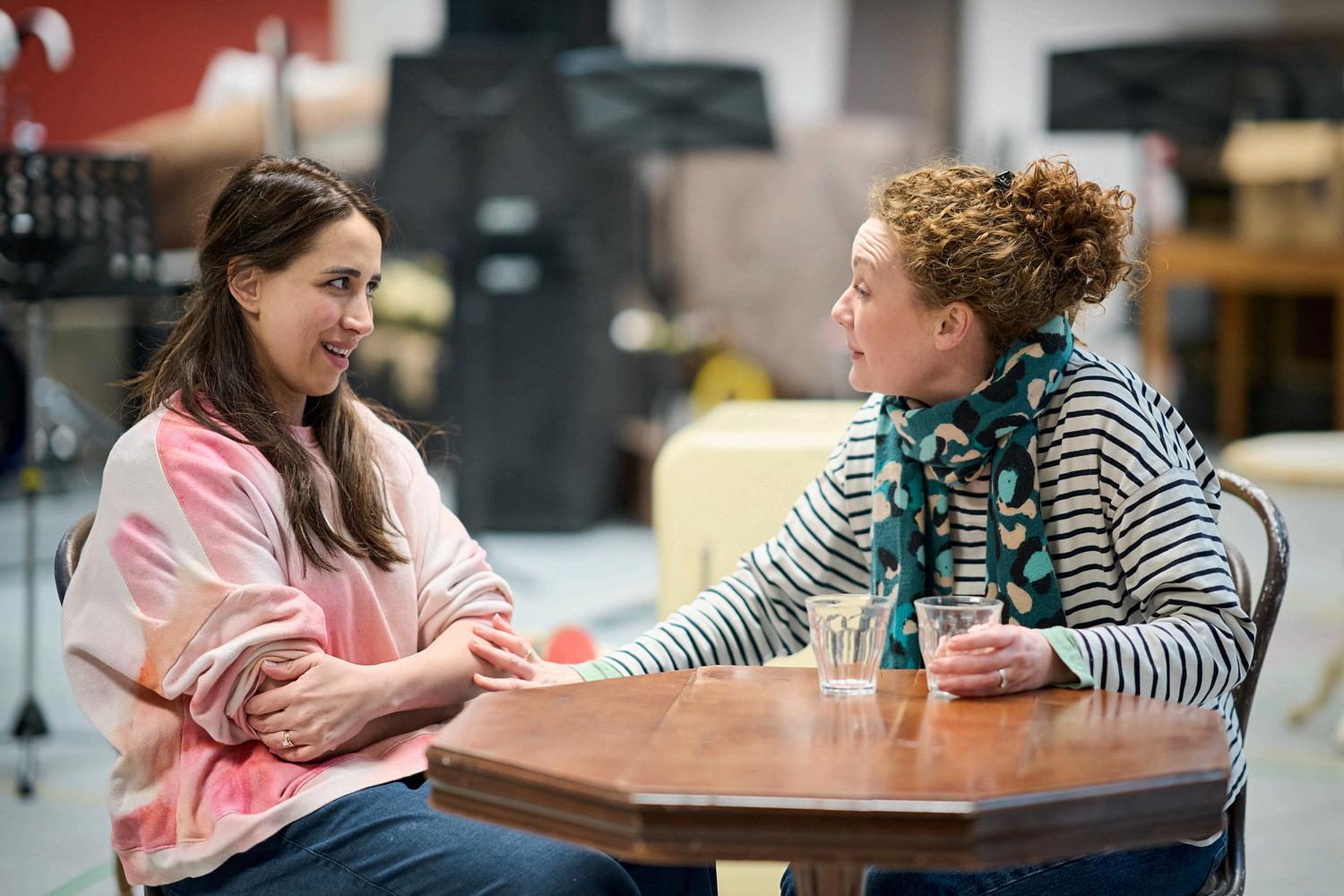
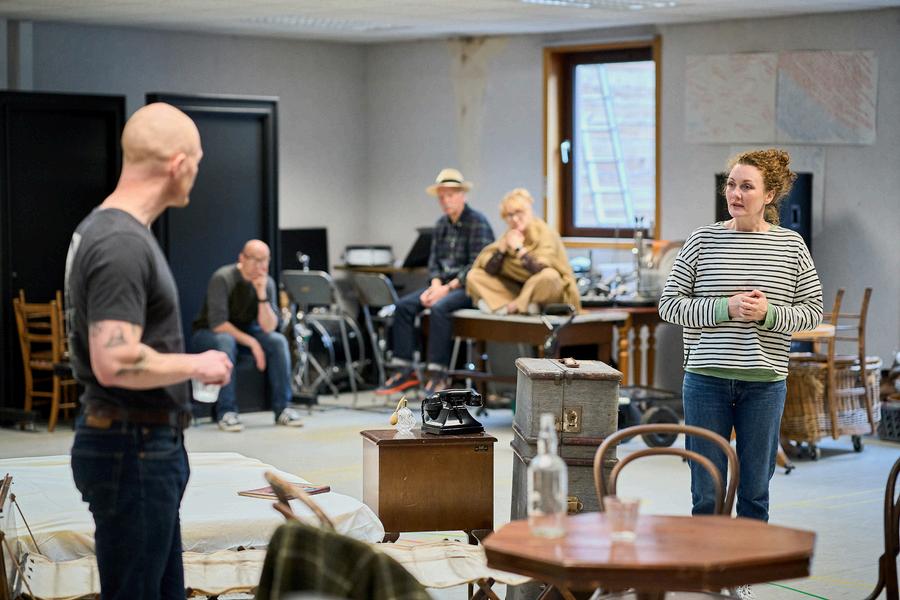

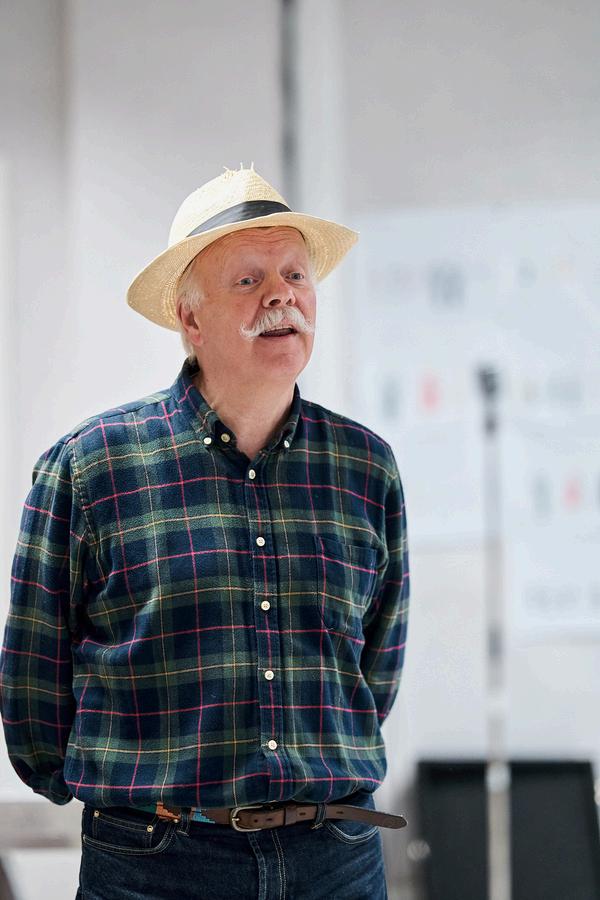
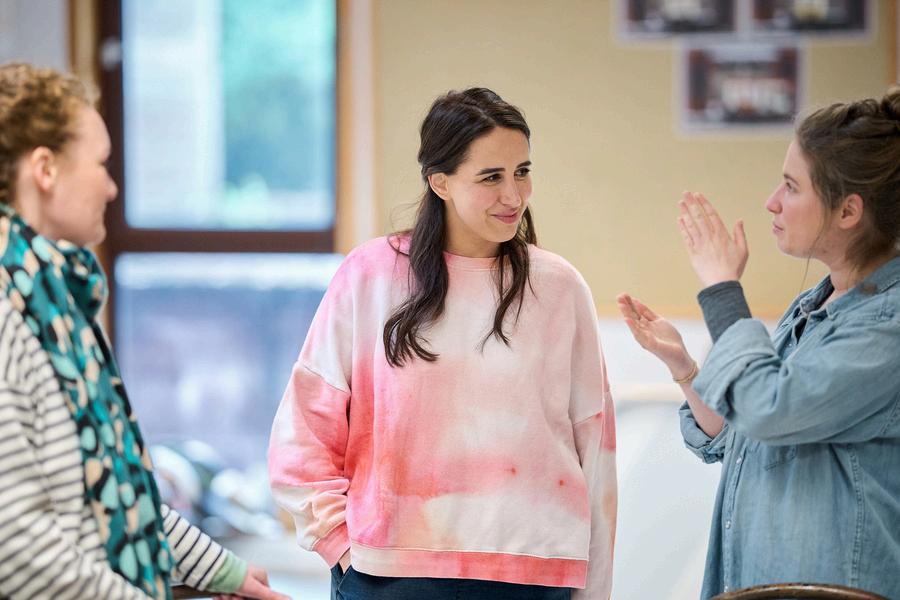
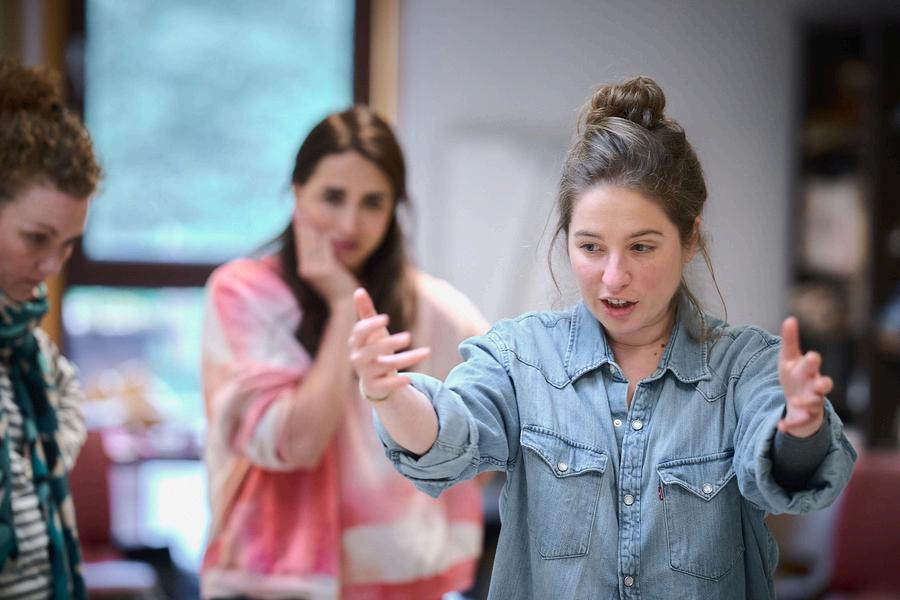
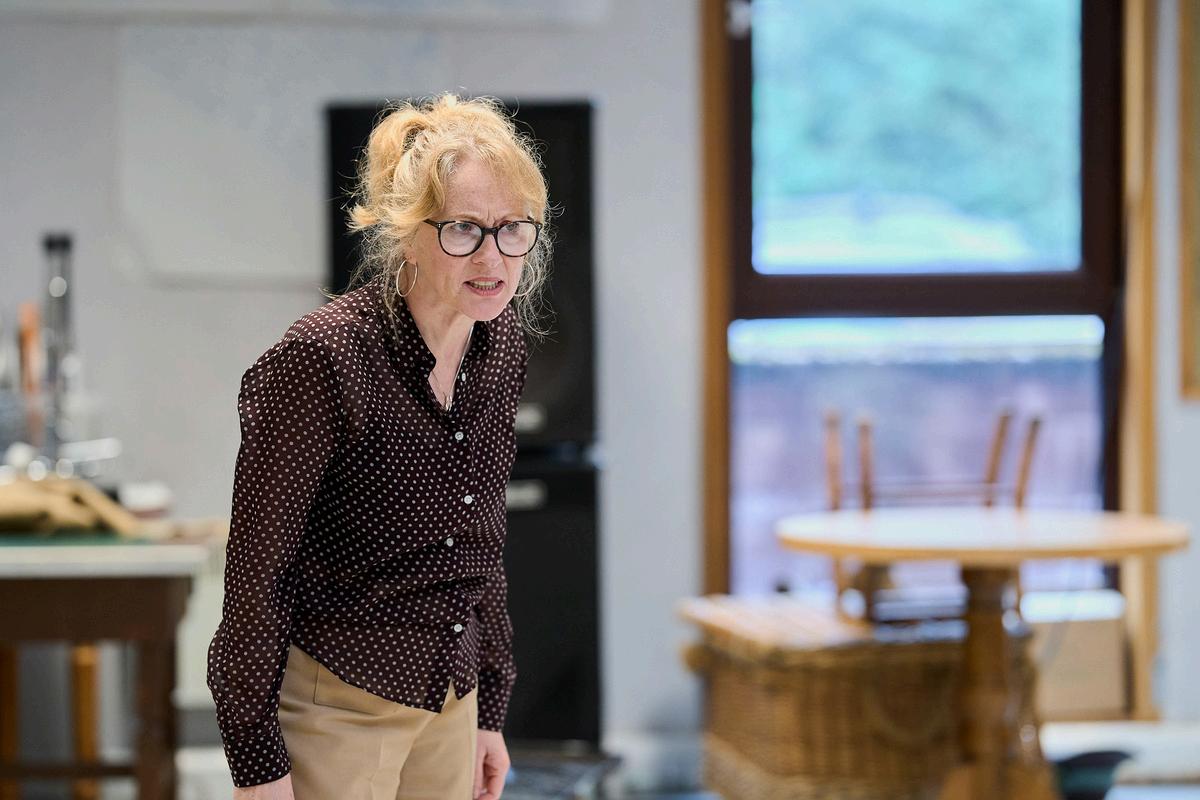
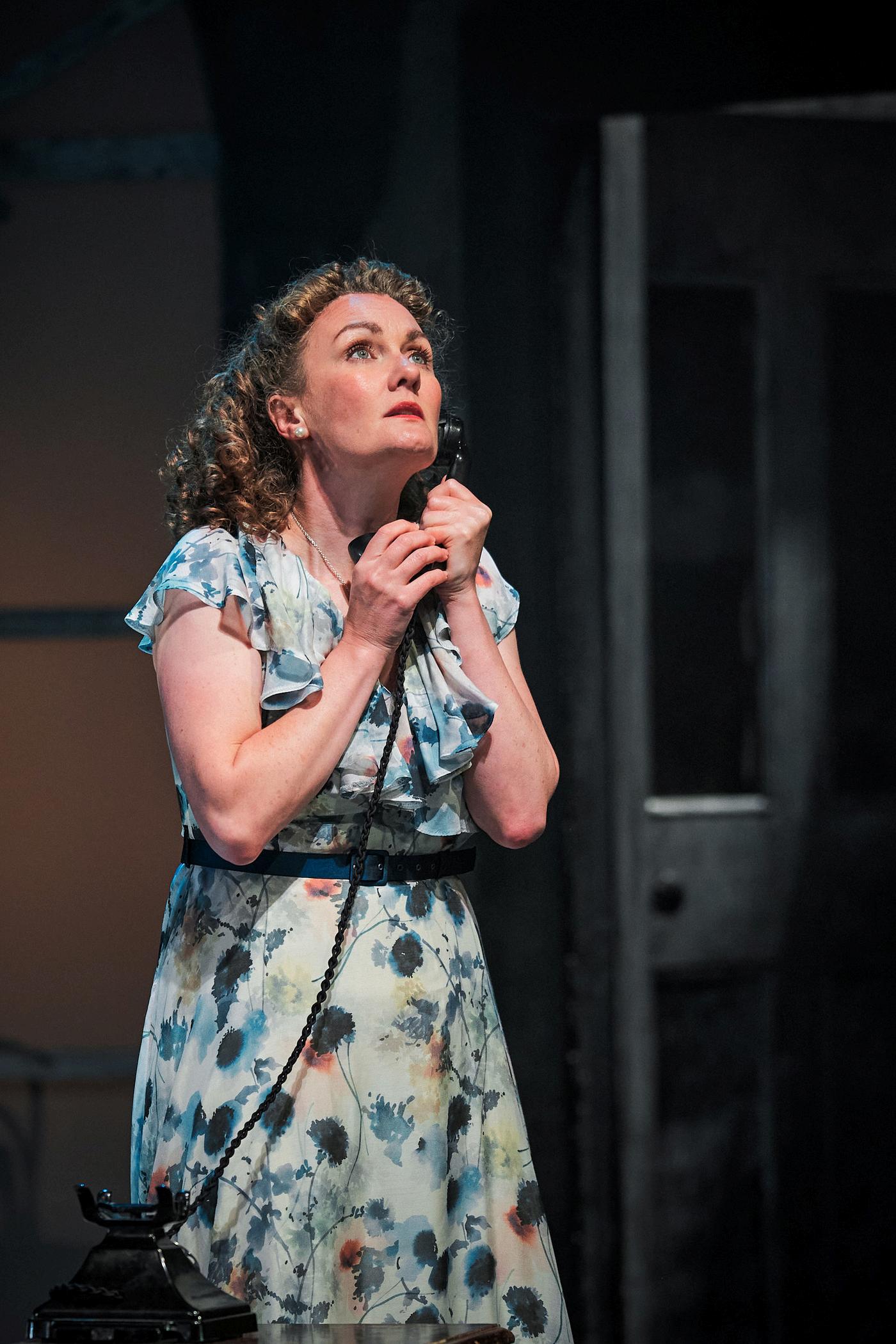
Drawing on what students have learned about the play and the Creative Team’s approach to the production, offer students the opportunity to put this learning into practice by devising a pitch for their own unique version of the play
Split the class into groups and ask them to assign themselves roles within the creative team:
Director
Actor
Lighting Designer
Sound Designer
Set
Designer
Costume Designer
Marketing Lead
Ask each group to develop a vision for a production to pitch back to the class. It may be useful for them to structure their pitch around the following areas:
What is the setting of their production? (Location, country or time period)
What key themes would they focus on, and how would these be shown on stage? Who is their intended audience?
This will then lead to students considering the look and feel of the production. Students might want to refer to images, sounds, colours, textures or smells
Students can then present their pitch back to the rest of the class in a variety of different ways:
Digital Presentation
Mood Boards
Talk show Q&A
Hot Seating
Performing Selected Scenes
Marketing – Posters, Video Adverts
This exercise will encourage students to explore multiple possibilities for how one play can be staged. Students will engage their own creativity and connect this to their learning about the play, considering why they would make certain choices By taking on different roles, students will also gain practical insight into the collaborative process of theatre-making as they work together to share and negotiate ideas and to create one pitch
As part of our Creative Learning programme, we offer a range of opportunities for schools and teachers to engage with our work and season shows. Designed for Primary, Secondary and Higher levels, our workshops, tours and education packs support the Curriculum for Excellence and offer creative ways to support and enhance your existing curriculum.
Specifically designed to support Higher and Advanced Higher Drama studies, these workshops will give your pupils the opportunity to delve deeper into our productions of A Streetcar Named Desire and The Merchant of Venice. All workshops are delivered by one of our experienced facilitators and come with a Lyceum production resource pack
Development of characters Design concept Collaboration and dramatic impact


We also offer custom-designed workshops for Primary and Secondary classes on request. These aim to support studies across the curriculum and can cover anything from general performance skills to a more in-depth topic or subject that you are studying. They can be designed on a one-off basis or as a programme across several weeks.
So much happens behind the scenes at the Lyceum and we’d love to give you special access! Our tours allow you to get up close to our work by exploring spaces not usually open to members of the public. Tours of the Theatre or our Production workshop at Roseburn can be arranged

Our CLPL sessions aim to support teachers and educators in using drama in the classroom by developing confidence and equipping them with a range of drama techniques so that this form of teaching and learning can be embedded within their day-to-day practice. CLPL sessions can be tailored to any learning area.
